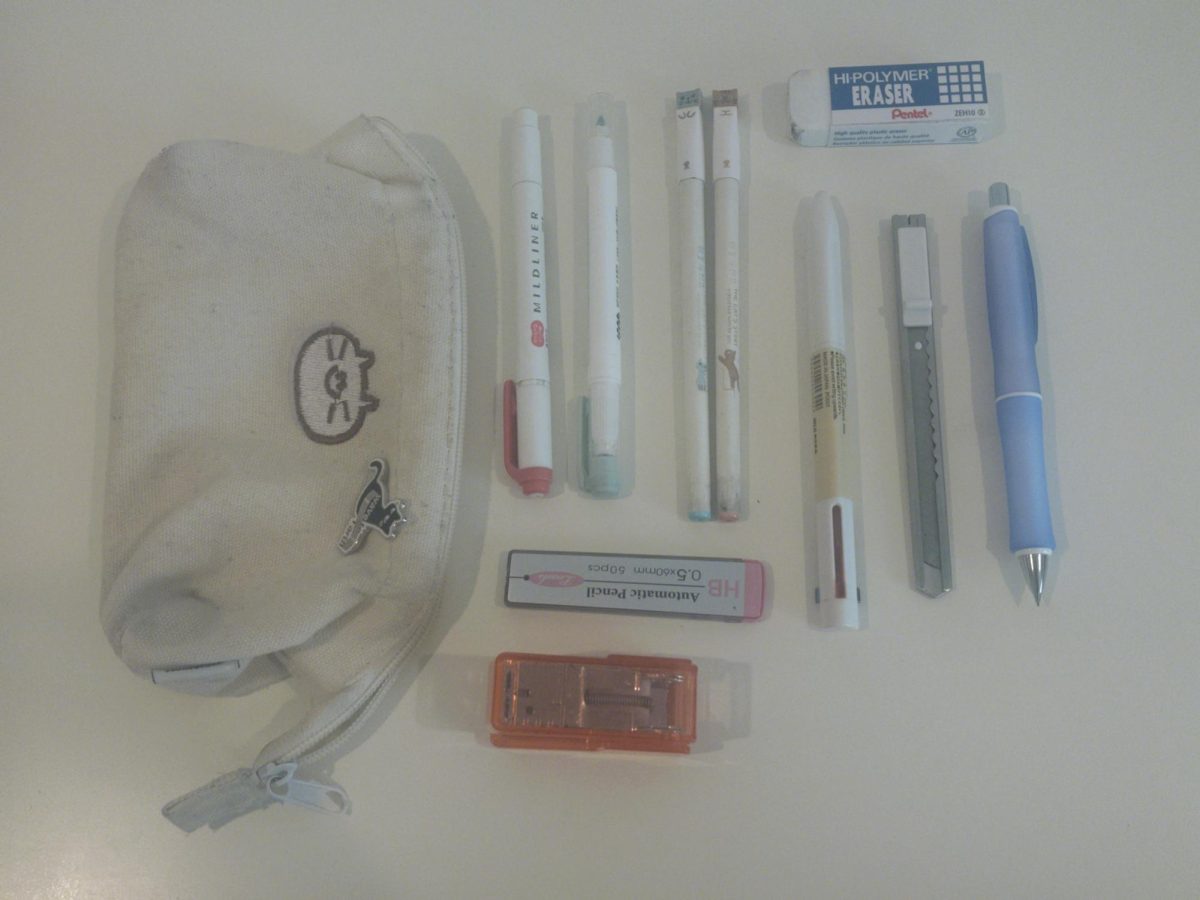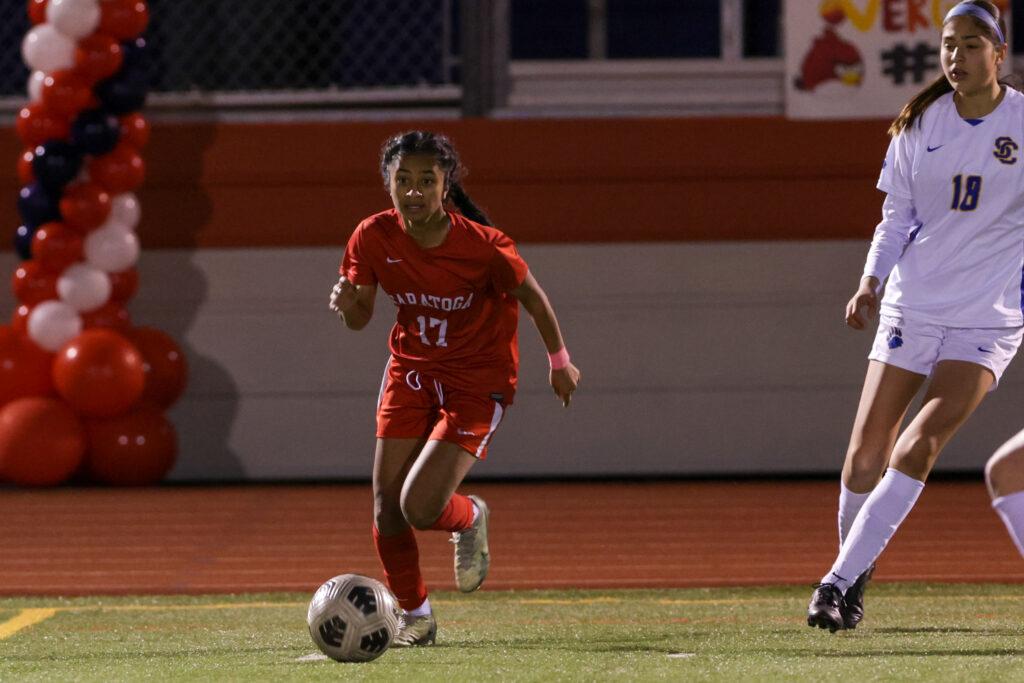As freshman varsity girls’ soccer player and striker Sahaana Potti dribbled down the line and went to cross the ball into the 18-yard box against Mountain View on Feb. 1, she felt an extremely sharp pain in her lower back. In her efforts to continue playing, she ignored the pain, put Biofreeze where it was hurting during halftime and went back onto the field.
“You know how Biofreeze can solve everything. Apparently, it does not,” Potti reflected. “You’re not supposed to cool [your back] down that quickly, so my lower back inflamed and progressively worsened as a result.”
She recalled her back had been bothering her for days, but didn’t think much of it and just hoped the pain would go away. When the school’s head athletic trainer Caitlin Steiding evaluated her the day after, Potti learned she had hyperextended her lumbar spine, specifically her Sacroiliac (SI) joint, due to overuse and repetition.
“I should have managed my physical workload better — because not only did I play games when it had been hurting a bit, but I also had some high-intensity practices in the weeks leading up to [the injury],” Potti said. “I also shouldn’t have put too much pressure on my back while weightlifting and [I should have] been more careful with my form.”
To rehabilitate the injury, Potti worked with Steiding for a few weeks, using electrical stimulation to enhance tissue healing and increase circulation, deep and soft tissue massages as well as specific stretches for relief. Steiding also referred Potti to a chiropractor — Dr. Kiana Choroski — who greatly helped shorten her recovery time.
Over the two years Steiding has worked here, she has found that most of the athletes that she treats have injuries that can be prevented with proper care of their bodies.
She stresses that athletes like Potti should come see her before the injuries become a serious problem. By showing them how to properly stretch and foam roll, she can help reduce the risk of injury and shorten recovery time.
When athletes come into the training room with an injury, she always starts with an evaluation and conducts orthopedic tests to assess the next step in treatment.
“Usually, if [the injury] is something simple like tightness, I’ll do some soft tissue work with them,” Steiding said. “If they need to do some strengthening, I’ll give them exercises to do depending on where it’s hurting.”
However, if her tests indicate that the injury needs to be further looked into, Steiding refers the athlete to a doctor who she works under and figures out the best course of treatment for the athlete from there.
To athletes who are struggling to get back to their normal after an injury, she urges them to rely on their support system, whether they are friends, family, teammates or coaches, and to take rehab seriously.
“Weightlifting isn’t the only way to strengthen and rehab in the proper way,” Steiding said. “Having a mixture of everything — cardio, weights, rest days — is a really strong way to [stay healthy and in shape].”




























